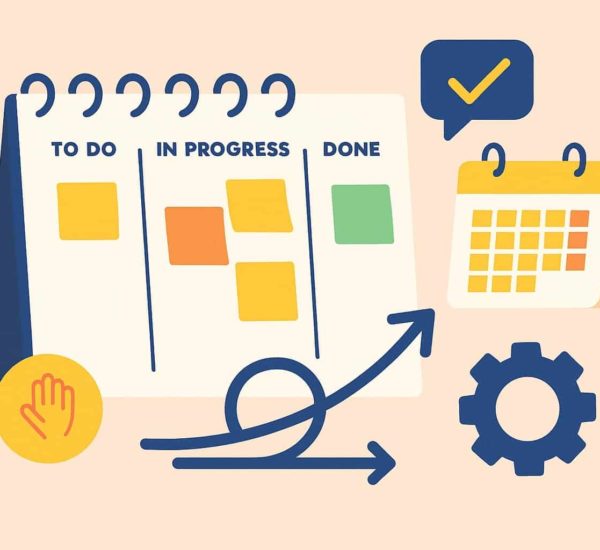In recent years, employee training and development have become vital components of organizational strategy. Many business owners have recognized that investing in employee training programs not only motivates staff but also helps the organization build a highly skilled workforce.
In today’s dynamic business environment, the success of an organization often hinges on its ability to adapt and grow. An essential part of this growth is investing in employee training and development. Not only do these programs enhance individual skills, but they also play a crucial role in the overall success of the company.
Let’s explore how training and development for employees can drive performance and foster a thriving workplace and why it matters.
Why Employee Training and Development Matters
Although investing in employee training and development may present some challenges, the benefits significantly outweigh the drawbacks. Here’s how training and development for employees can enhance your organization:
1. Strengthening Employee Skills
A close assessment of any workforce can often reveal skill gaps among employees. Training and development for staff offers an effective way to address these deficiencies by equipping employees with the necessary skills. In parallel, employee development programs help broaden the knowledge base of your entire team.
By implementing comprehensive employee training and development, companies can close skill gaps and reinforce any weak links within their teams. This ensures that every team member is capable of stepping in for a colleague and handling tasks competently.
2. Enhancing Employee Performance
Employees who participate in regular training and development for employees are often more productive and efficient in their roles. Such programs ensure that employees are well-versed in safety protocols and industry best practices. Additionally, professional development training for employees boosts their confidence by deepening their understanding of their responsibilities and the industry landscape.
3. Elevating the Company’s Reputation
While employee training and development greatly benefit the workforce, they also significantly enhance the company’s reputation. Offering frequent employee development programs helps build the organization’s brand as an employer of choice, attracting top talent from competitors and new graduates. A company that invests in employee training development becomes more appealing to potential new hires who are eager to develop their skills further.
4. Fostering Innovation
Consistent employee training and development can be a catalyst for innovation within an organization. When employees are regularly trained and upskilled, it stimulates their creativity and encourages them to think outside the box. Training and development programs for employees not only enhance their problem-solving skills but also empower them to be more independent and innovative when faced with challenges at work. This can lead to fresh ideas and creative solutions that drive the company forward.
Effective Training Methods for Employee Development
As new training techniques continue to evolve, several tried-and-true methods remain highly effective. These include:
1. Employee Orientation Programs
Orientation is vital for integrating new hires into the company. Whether delivered through a handbook, individual session, or group lecture, the focus should be on introducing new employees to the organization’s background, strategies, mission, vision, and goals. Employee orientation programs ensure that recruits understand company policies, rules, and regulations, setting them up for success from the start.
2. Group Training Sessions
Group training sessions are an efficient way to convey information to a large audience simultaneously. This method reduces the need for individualized training, resulting in cost savings. However, group lectures have some drawbacks, such as limited interactive feedback opportunities and difficulty gauging individual comprehension within a large audience.
3. Computer-Based Training (CBT)
Computer-Based Training (CBT) utilizes technology to deliver instructional content and facilitate learning. Employees engage with training materials through computer programs and tutorials at their own pace and convenience.
One of the major advantages of CBT is its flexibility, allowing employees to learn on their schedules. Additionally, this approach can significantly lower training costs by shortening the overall duration, eliminating the need for in-person instructors, and reducing travel expenses.
4. On-the-Job Training (OJT)
On-the-Job Training (OJT) involves employees learning their roles through hands-on experience in their actual work environment. This method allows employees to acquire practical skills and knowledge directly relevant to their job functions. It’s often paired with mentorship from experienced colleagues, providing real-time feedback and support. OJT helps employees integrate theoretical knowledge with practical application, enhancing their overall job performance.
5. Simulation-Based Training
Simulation-Based Training employs virtual environments or scenarios to mimic real-world tasks and challenges. This method is particularly effective for complex or high-risk roles where hands-on practice is crucial. By engaging in realistic simulations, employees can gain practical experience without the risks associated with real-life tasks. Simulation-based training helps in building confidence and competence, enabling employees to handle their duties more effectively.
Organizations implement various employee training and development programs tailored to meet their specific needs and goals. High-performing companies align these initiatives with organizational objectives, the target audience, and the desired skills or knowledge.
6. Technical Training
Technical training focuses on specific technical tasks or products relevant to a particular job or organization. This training is often customized to address the precise needs of the role, helping employees master the technical aspects required for their position.
7. Skills Training
Skills training helps employees develop or enhance the skills essential for their job functions. This type of training can cover a broad range of skills, from job-specific techniques to broader competencies necessary for daily tasks.
8. Soft Skills Training
A subset of skills training, soft skills training emphasizes the development of interpersonal and non-technical abilities. Soft skills, often referred to as “power skills” or “professional life skills,” include emotional intelligence, adaptability, creativity, communication, and teamwork. This type of training is crucial for fostering effective collaboration and leadership within the workplace.
9. Compliance Training
Compliance training ensures that employees are aware of and adhere to legal, regulatory, or policy requirements specific to their industry. This training may cover areas such as cybersecurity, sexual harassment, and other regulations mandated by external bodies.
10. Safety Training
Safety training aims to enhance workplace health and safety, reducing the risk of injury and promoting a safe working environment. This training can address various aspects, including employee safety, workplace safety, customer safety, and digital information safety. It often includes both legally required safety protocols and additional practices implemented voluntarily by the organization.

Building Effective Employee Training and Development Programs
To create a successful employee training and development program, organizations should start with a thorough needs assessment. This process involves a talent development professional, often an instructional designer, who collects and analyzes data to pinpoint the gap between the current state and the desired future state of the organization, business unit, or team.
Needs assessments identify specific skill or knowledge gaps and recommend the most effective ways to address these deficiencies. They also help gain support from stakeholders and build rapport with learners.
Depending on the project’s scope, an organization may need to involve an instructional designer or a team of instructional designers to develop customized learning experiences and materials that promote the acquisition and application of knowledge and skills. Alternatively, organizations might opt for off-the-shelf training from vendors, leverage digital assets, utilize leaders as teachers, or explore other development methods.
After developing the employee training and development program, organizations must determine how employees will access it. This decision will depend on the specific audience for the training, the type of training provided, and the technology used.
Summary
Knowledge and skills are essential for organizational success in the modern business environment. Companies are evaluated based on both their physical assets and their intellectual capital. One of the most effective ways to build and enhance a firm’s intellectual capital is through comprehensive employee training and development programs.
Investing in training and development for employees not only improves performance but also proves to be more cost-effective than managing employees with insufficient skills. Training and development programs help in addressing skill gaps, boosting employee performance, and elevating the company’s reputation. By focusing on technical training, soft skills training, compliance training, and safety training, organizations can ensure they meet the diverse needs of their workforce.
Additionally, well-structured employee development programs contribute to creating a strong employer brand, making the company more attractive to top talent. Regular training and development not only support employee growth but also fortify the overall strength of the organization.




